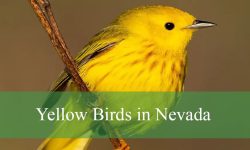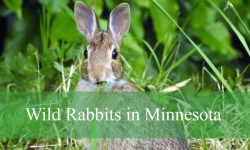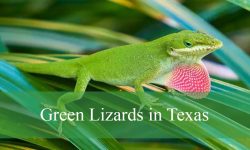Idaho is home to an incredible variety of squirrels that thrive from forested mountains to open plains. Their quick movements, alert calls, and bushy tails add liveliness to the state’s diverse landscapes.
This guide introduces 15 squirrel species that can be found across Idaho, including tree squirrels, ground squirrels, and flying squirrels. Each species is adapted to its environment, from dense conifer forests to wide meadow valleys.
These small mammals are an essential part of Idaho’s natural balance, spreading seeds, shaping forests, and providing a glimpse into the state’s rich wildlife heritage.
Types of Squirrels Found in Idaho
Eastern Fox Squirrel (Sciurus niger)
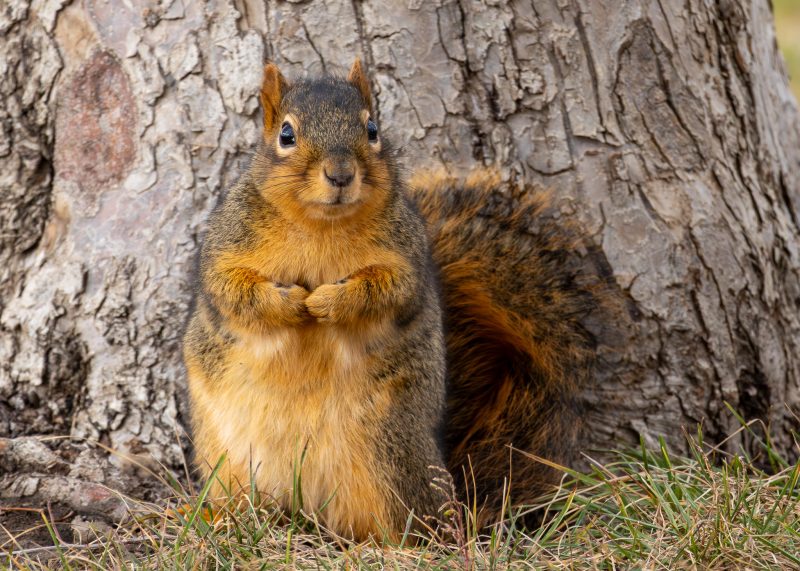
The Eastern Fox Squirrel is the largest tree squirrel found in Idaho, easily recognized by its reddish-orange fur and bushy tail. Adults typically measure between 19 and 29 inches in total length, including their tail, and weigh around 1.5 to 2.5 pounds. Their coat can vary from grayish-brown to rusty orange, depending on the region and season.
In Idaho, the Eastern Fox Squirrel was introduced and has adapted well to urban parks, farmland edges, and open woodlands. They are strong climbers but spend a lot of time on the ground foraging for food. Their adaptable nature makes them one of the most visible squirrels near human habitation.
These squirrels primarily eat acorns, walnuts, corn, and various seeds. In fall, they bury nuts underground for winter, often forgetting where they hid them—helping new trees grow. They also occasionally eat bird eggs or insects when plant food is scarce.
Fun fact: Fox squirrels are known to “freeze” and flatten themselves against tree trunks when threatened, using their color to blend in perfectly with the bark—a simple but effective camouflage strategy.
American Red Squirrel (Tamiasciurus hudsonicus)
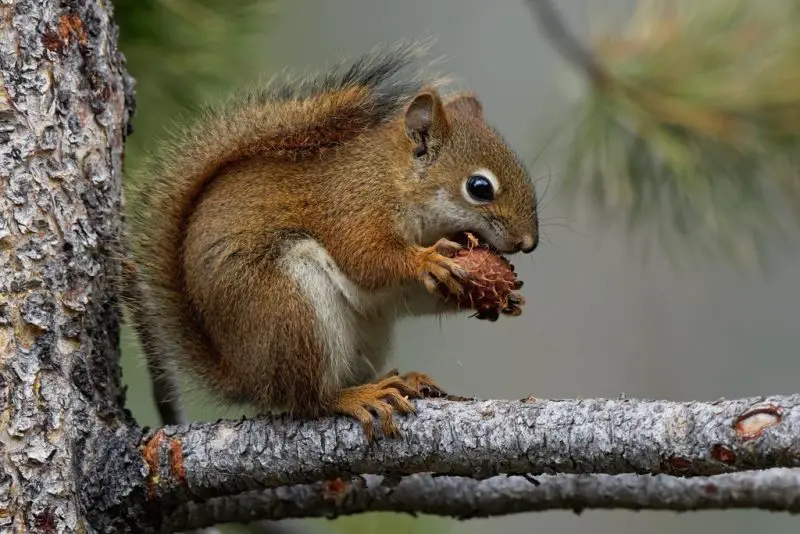
The American Red Squirrel is a small, feisty species easily identified by its reddish fur, white belly, and bold personality. Adults measure about 12 to 15 inches long, including their tail, and weigh roughly 7 to 9 ounces. Their sharp, chattering calls are often heard long before you see them.
In Idaho, these squirrels are common in coniferous forests, especially in pine and spruce stands. They build large spherical nests of twigs and bark high in trees or use old woodpecker cavities. Red squirrels are territorial and will loudly scold intruders that come too close to their feeding area.
They feed mainly on pine cones, acorns, fungi, and occasionally bird eggs. They are known to collect and store large quantities of pine cones in “middens” for winter—a behavior that shapes the forest ecosystem by influencing seed distribution.
Fun fact: Red squirrels can remember the exact locations of their food caches for months, even under snow, demonstrating impressive spatial memory for their size.
Douglas Squirrel (Tamiasciurus douglasii)
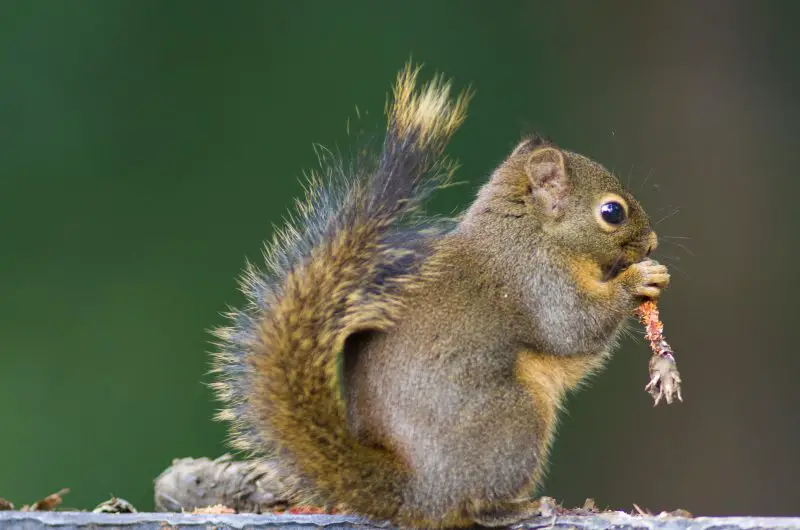
The Douglas Squirrel, often called the “chickaree,” is a lively and vocal species found in Idaho’s western forests. It has a rusty brown back, pale orange belly, and a bushy tail edged with black. Adults average 11 to 14 inches long and weigh about 6 to 8 ounces. Their alert movements and loud chatter make them easy to spot.
These squirrels inhabit mixed conifer forests, particularly those dominated by Douglas fir, which is also their main food source. They prefer mature forest stands with dense canopy cover, where they find safety from predators such as hawks and owls.
Their diet includes seeds, nuts, berries, and fungi. They are particularly fond of green pine cones, which they clip and store in piles for later use. Douglas squirrels also play a role in spreading fungal spores vital for tree health.
Fun fact: The Douglas squirrel’s territorial calls are so distinctive that they were nicknamed the “forest alarm system” by hikers and birdwatchers who often hear them echoing through the woods.
Western Gray Squirrel (Sciurus griseus)
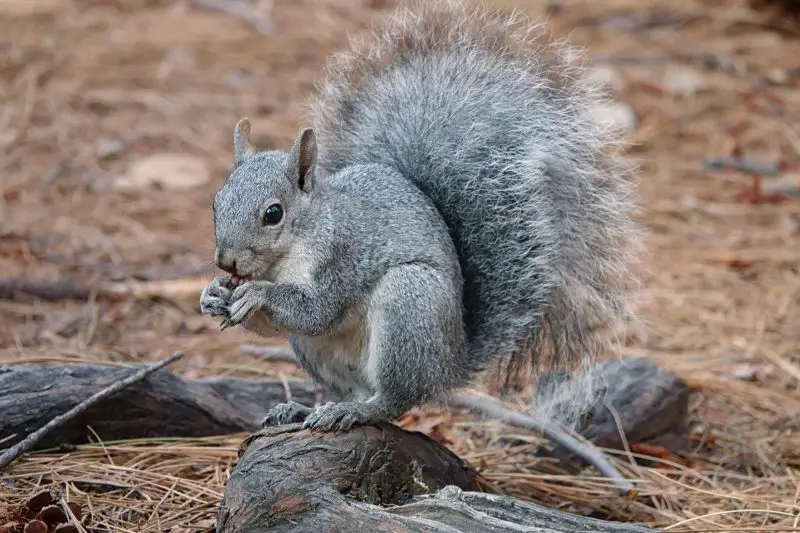
The Western Gray Squirrel is one of the most striking squirrels in Idaho, with its silky silver-gray fur and long, full tail edged in white. It’s larger than most other tree squirrels, reaching 18 to 24 inches in length and weighing between 1.3 and 2.5 pounds. Its graceful movements and calm demeanor set it apart from its chattier cousins.
This species favors oak woodlands, pine forests, and mixed hardwood areas, mainly in Idaho’s western regions. It prefers quiet, mature forests with a good mix of nut-bearing trees, where it builds large leafy nests high in the canopy.
Western Gray Squirrels primarily feed on acorns, pine nuts, berries, and fungi. They are important forest seed dispersers, as many of the nuts they bury are never retrieved. During hot summers, they may rest for long periods in the shade to avoid overheating.
Fun fact: Unlike many squirrels, the Western Gray Squirrel is relatively silent. When threatened, it often remains perfectly still rather than vocalizing—an unusual behavior that helps it avoid detection by predators.
Idaho Ground Squirrel (Urocitellus brunneus)
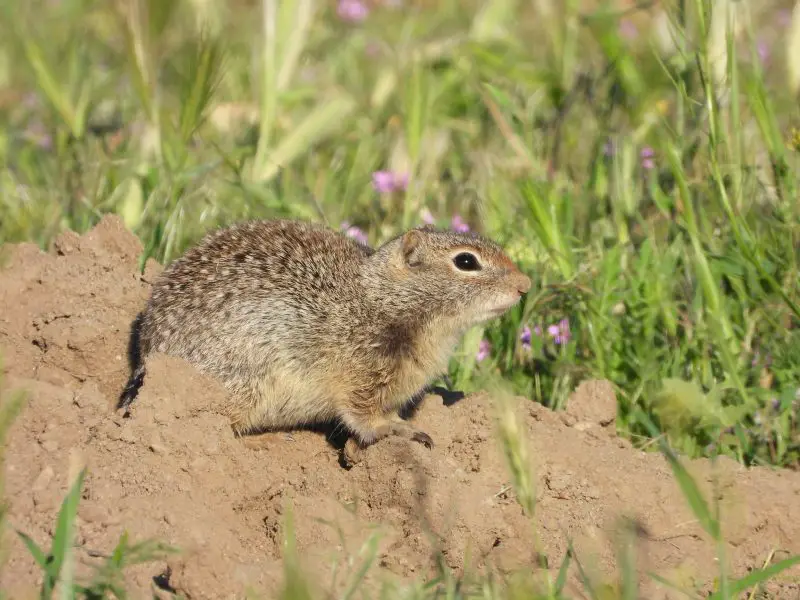
The Idaho Ground Squirrel is a small, burrowing species found only in Idaho, making it an endemic mammal to the state. Adults measure about 8 to 9 inches long and have a short, slightly flattened tail. Their fur is grayish-brown with lighter underparts, blending well with dry grasslands and meadows.
These squirrels live in open sagebrush flats and grassy areas of west-central Idaho. They spend much of their lives underground, emerging mainly in spring and early summer when vegetation is plentiful. They are social animals, often seen in small colonies near their burrow entrances.
Their diet consists of grasses, seeds, roots, and insects. Idaho Ground Squirrels hibernate for most of the year, typically from late summer through winter, depending on elevation. They must fatten up quickly to survive their long dormancy.
Fun fact: This species is considered one of the rarest squirrels in North America. Its limited range and short active season make it especially vulnerable, and conservation efforts are ongoing to protect its habitat.
Northern Idaho Ground Squirrel (Urocitellus brunneus brunneus)
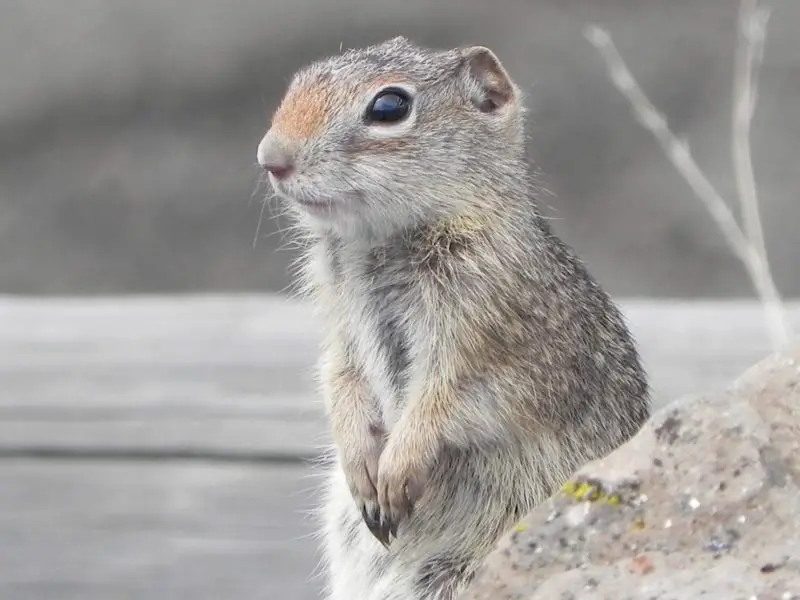
The Northern Idaho Ground Squirrel is a small, burrow-dwelling rodent found only in a few mountain valleys of west-central Idaho. Adults grow to about 8 to 9 inches long, including a short tail. Their fur is a mix of brown and gray tones that help them blend perfectly into dry grassland soils and rocky meadows.
This rare subspecies lives in high-elevation meadows surrounded by ponderosa pine forests, typically between 3,000 and 5,400 feet. It prefers well-drained soils for digging extensive burrow systems. The Northern Idaho Ground Squirrel is most active from late March through July, after which it enters hibernation for the rest of the year.
Its diet consists primarily of grasses, seeds, roots, and insects. Because its active period is short, it must eat and store energy rapidly. Habitat loss from grazing and development has made this species federally listed as Threatened under the Endangered Species Act.
Fun fact: Northern Idaho Ground Squirrels communicate through soft chirps and tail flicks — subtle signals that help them warn others of danger while avoiding drawing attention from predators.
Southern Idaho Ground Squirrel (Urocitellus brunneus endemicus)
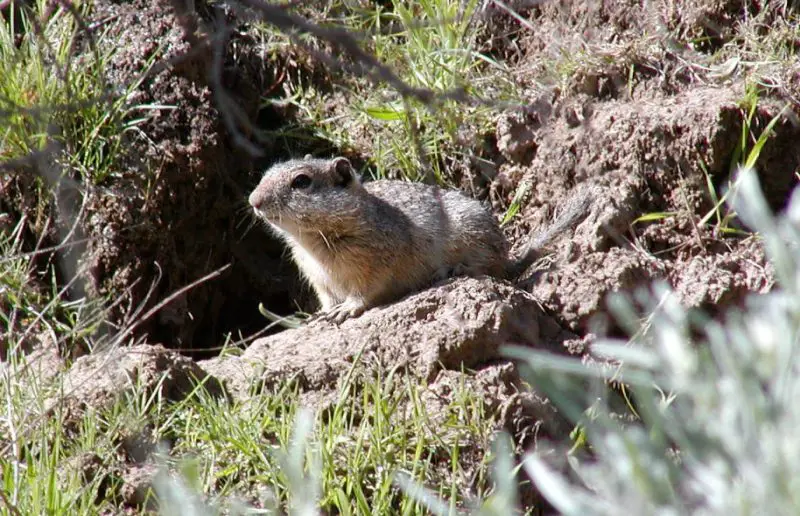
Closely related to its northern cousin, the Southern Idaho Ground Squirrel occupies lower-elevation grasslands in southwestern Idaho. It’s slightly smaller, reaching 7 to 8 inches long, and has a lighter coat with more tan and yellowish hues. The fur along its back often appears speckled, providing effective camouflage.
This species inhabits valleys and foothills with sandy or loamy soils suitable for burrowing. Colonies are often found in open meadows and agricultural fields. Like most ground squirrels in Idaho, it is only active for a few months of the year, typically from February to June, before retreating underground for hibernation.
Southern Idaho Ground Squirrels feed on green vegetation early in the season, then shift to seeds and grains as they prepare for dormancy. They are highly sensitive to environmental changes, and habitat conversion has reduced their range significantly in recent decades.
Fun fact: During hibernation, their body temperature drops so low that they can appear lifeless — yet they survive months without eating, awakening just as spring vegetation returns.
Columbian Ground Squirrel (Urocitellus columbianus)
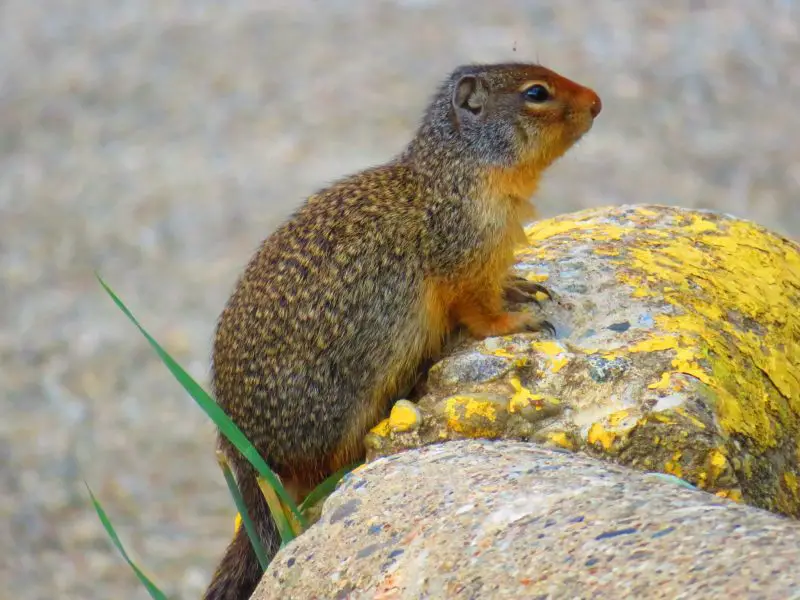
The Columbian Ground Squirrel is one of Idaho’s most recognizable burrowing species, often spotted standing upright near roadsides or meadows. Adults measure about 10 to 12 inches long and have a grayish coat with reddish-brown fur on the face and forelegs. Their tail is short but fluffy, and they give sharp alarm calls when threatened.
This species is widespread across northern and central Idaho, living in open mountain meadows, pastures, and alpine valleys. They prefer areas with good visibility to spot predators such as hawks and coyotes. Their burrows can be extensive, with multiple entrances for quick escape routes.
Columbian Ground Squirrels eat grasses, seeds, roots, and wildflowers. They hibernate for about seven to eight months of the year, emerging in spring to feed and breed before disappearing again in late summer. They are a key prey species for many predators in Idaho’s ecosystem.
Fun fact: Farmers once considered them pests for damaging crops, but modern studies show they help aerate soil and disperse native plant seeds — playing an essential ecological role.
Piute Ground Squirrel (Urocitellus mollis)
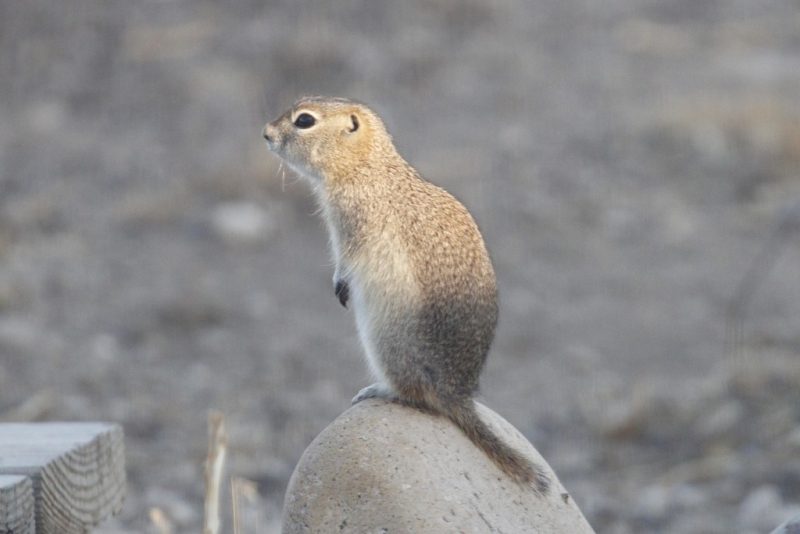
The Piute Ground Squirrel is a small, grayish-brown species found in southern Idaho’s sagebrush deserts. Adults are about 8 to 10 inches long, with a narrow, somewhat pointed head and short tail. Their fur is finely speckled, providing excellent camouflage among the dry grasses and soil.
They inhabit open sagebrush plains, valleys, and grasslands, especially in southern and eastern Idaho. These squirrels are among the first to enter hibernation each year — sometimes as early as late June — due to the hot, dry climate of their range. They dig deep burrows to escape the summer heat and winter cold.
Their diet includes grasses, forbs, seeds, and roots. In spring, they feed on tender green vegetation and shift to seeds later in the season. Piute Ground Squirrels are social animals, often living in colonies where individuals communicate through soft whistles or chirps.
Fun fact: When alarmed, Piute Ground Squirrels emit a high-pitched squeak and dive into their burrows so quickly that only a puff of dust remains — a behavior that inspired their local nickname, “whistle pigs.”
Belding’s Ground Squirrel (Urocitellus beldingi)
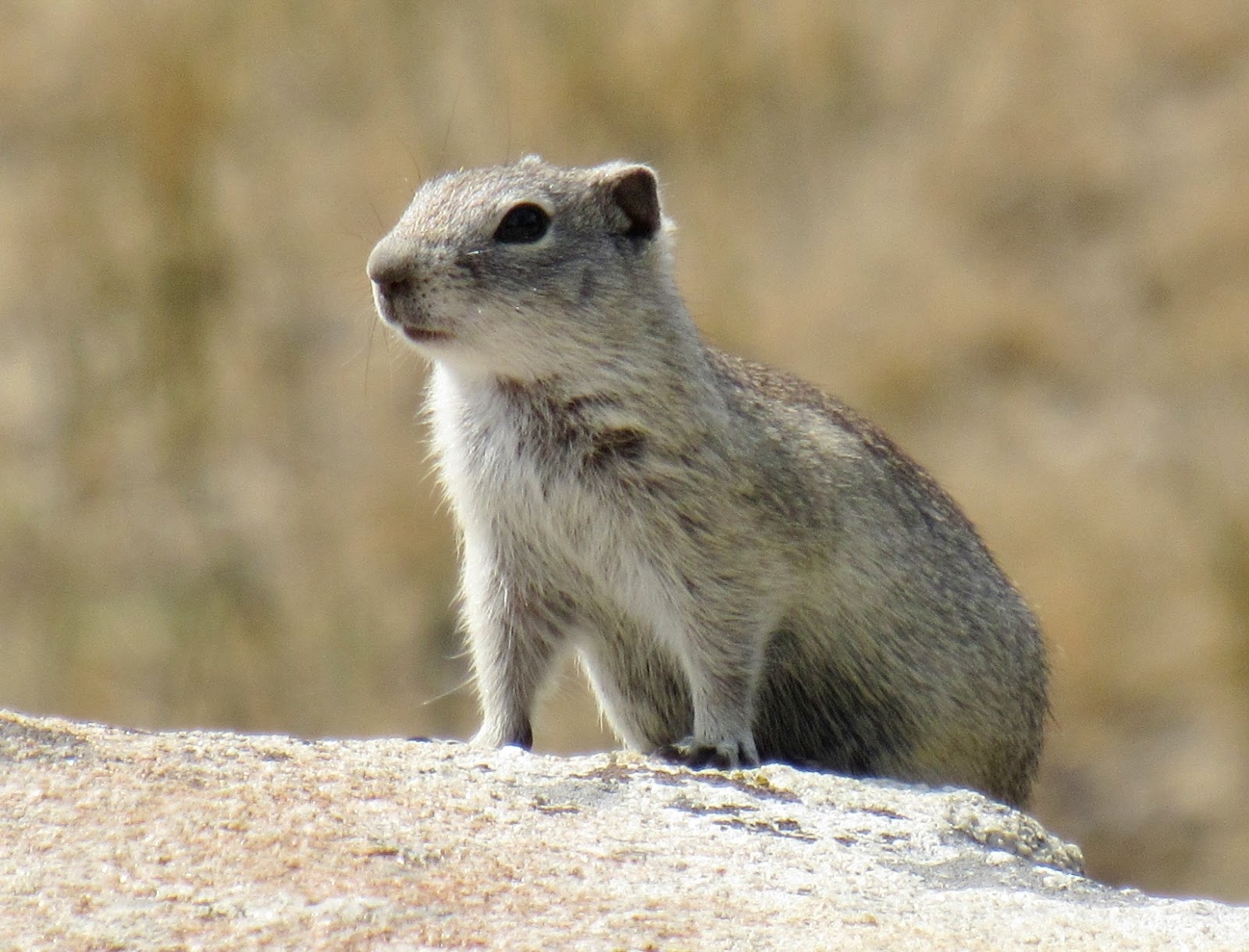
The Belding’s Ground Squirrel is a plump, gray-brown species common in the mountain meadows of central Idaho. Adults measure 9 to 11 inches in length, with short tails and round bodies. Their fur has subtle silver and cinnamon tones, helping them blend with alpine grasses.
This species is typically found in open, grassy meadows and pastures near streams or forest edges. They prefer cooler high-elevation areas and are active during daylight hours, often seen sitting upright near their burrow entrances to survey their surroundings.
Their diet consists of grasses, clover, flowers, and seeds, though they will occasionally eat insects. They spend late summer fattening up for hibernation, which can last eight months or more. During this time, entire colonies seem to vanish from sight.
Fun fact: Belding’s Ground Squirrels have a unique social structure — females often remain close to their birthplace and form small family groups, while males disperse to find new territories after maturity.
Golden-mantled Ground Squirrel (Callospermophilus lateralis)
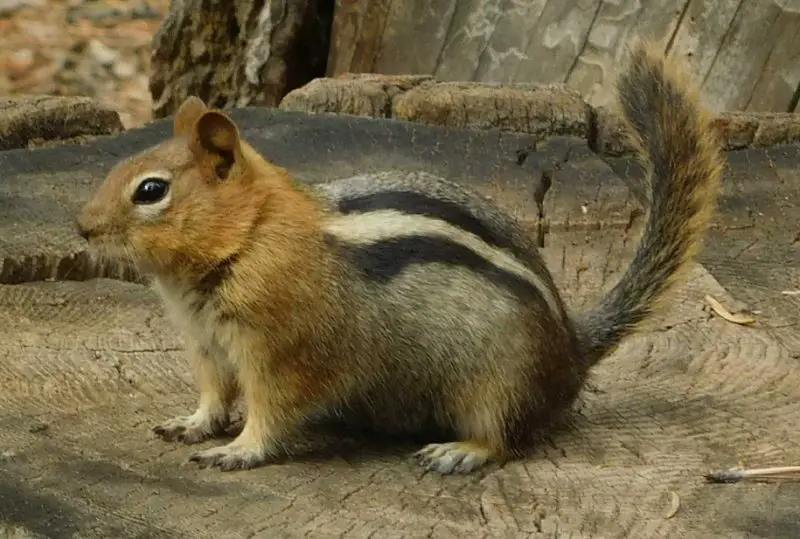
The Golden-mantled Ground Squirrel is one of Idaho’s most eye-catching small mammals, easily recognized by the golden “mantle” of fur around its neck and shoulders. It resembles a large chipmunk but lacks facial stripes. Adults reach about 9 to 10 inches in length and weigh around 7 to 9 ounces. Its back has two black stripes running from the shoulders to the hips, contrasting beautifully with the reddish-gold fur around the head and neck.
This species lives in rocky forests, open woodlands, and mountain slopes across much of Idaho, particularly in central and northern regions. It prefers areas with fallen logs, rocks, or shrubs that provide cover and nesting sites. Golden-mantled Ground Squirrels are solitary and spend much of their time gathering food for hibernation.
Their diet includes seeds, berries, nuts, and insects. They are known to visit campgrounds and picnic areas to scavenge for food, becoming quite accustomed to humans in popular hiking regions. Like most ground squirrels, they hibernate through the long Idaho winters.
Fun fact: These squirrels can enter a state of torpor where their body temperature drops near freezing — a remarkable survival mechanism that allows them to endure months of snow and cold without food.
Least Chipmunk (Neotamias minimus)
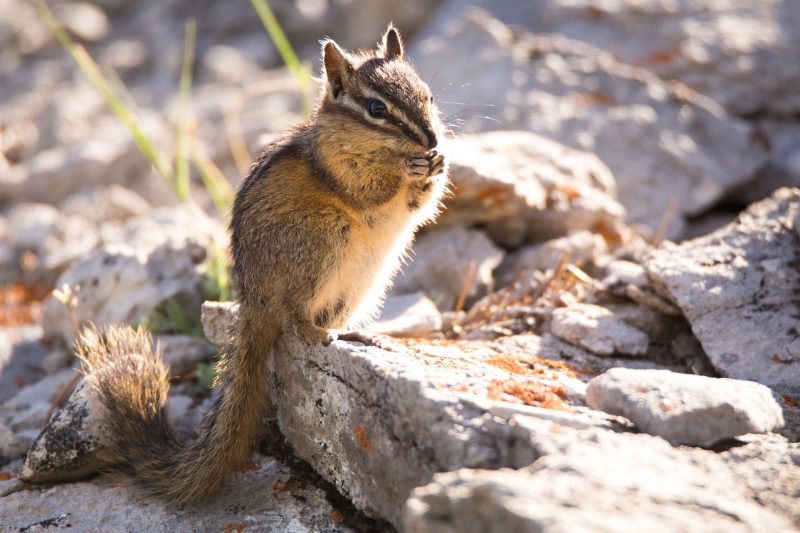
The Least Chipmunk is the smallest of all chipmunks in North America and is found throughout Idaho’s forests, shrublands, and mountain meadows. Measuring only 7 to 8 inches long including the tail, and weighing less than 2 ounces, it has tan fur with bold black and white stripes running from its nose to the base of its tail. Its cheeks expand impressively when full of food.
This species thrives in a variety of habitats, from dry sagebrush plains to high mountain slopes. It nests in underground burrows or logs and is active mostly during the day. Least Chipmunks are quick, curious, and always alert — darting between shrubs or rocks to avoid predators.
Their diet is highly varied and includes seeds, nuts, berries, and insects. They spend late summer and fall collecting food to store for winter. In cold regions of Idaho, they enter light hibernation but may wake occasionally during warmer spells to eat stored food.
Fun fact: A single Least Chipmunk can gather and hide thousands of seeds in a season, helping to replant the forest and promote native vegetation growth.
Yellow-pine Chipmunk (Neotamias amoenus)
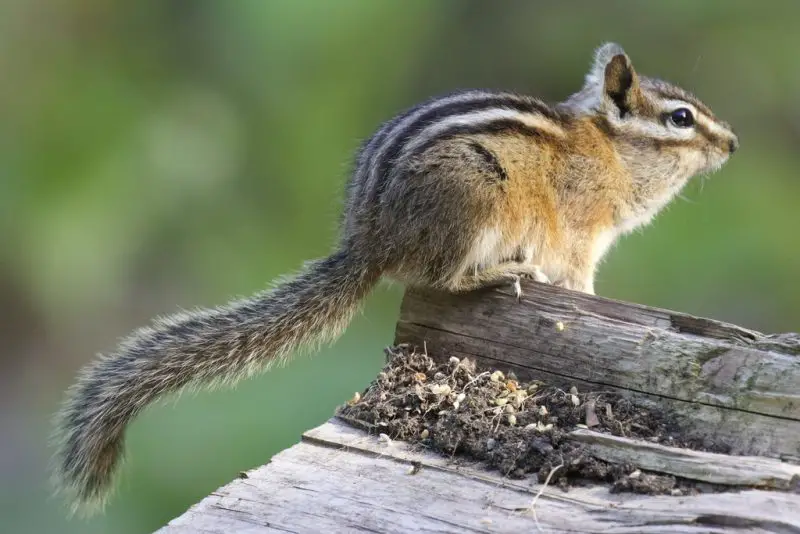
The Yellow-pine Chipmunk is another small and agile member of Idaho’s chipmunk family. It has a reddish-brown back with five black stripes and alternating white ones along its sides and face. Adults are about 8 to 9 inches long and weigh around 1.5 to 2 ounces. The fur along the flanks often shows a soft yellowish tint — the trait that gives this species its name.
This chipmunk prefers open pine forests, sagebrush slopes, and rocky hillsides across central and southern Idaho. It spends most of its day collecting seeds and berries, which it carries in its cheek pouches to its burrow. Unlike ground squirrels, Yellow-pine Chipmunks are more arboreal and often climb shrubs or low trees while foraging.
Their diet includes pine nuts, berries, seeds, and small insects. They play an important role in spreading seeds from coniferous trees, helping forest regeneration. During winter, they enter hibernation but occasionally wake up to feed on their stored supplies.
Fun fact: Yellow-pine Chipmunks are known for their high-pitched “chip-chip” calls, which serve as both social communication and predator alarms — often alerting nearby animals as well as their own kind.
Northern Flying Squirrel (Glaucomys sabrinus)
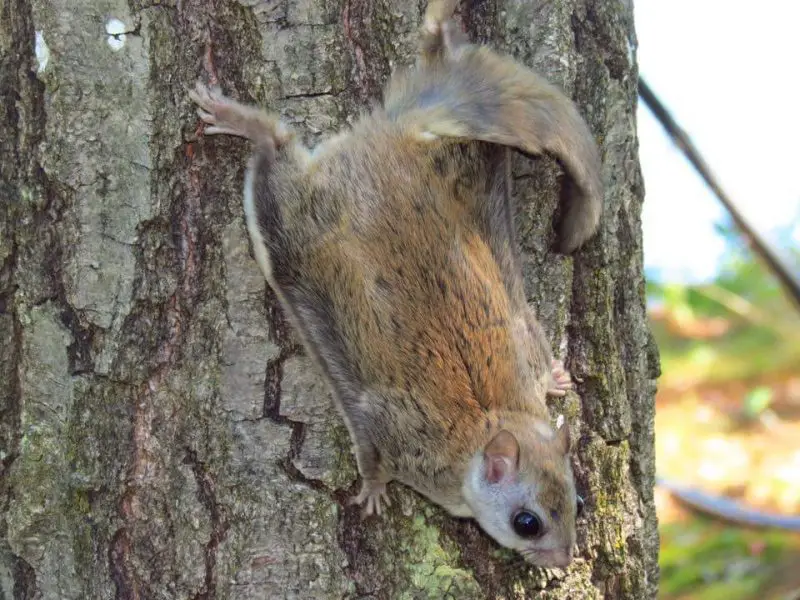
The Northern Flying Squirrel is a nocturnal glider found in Idaho’s mountain forests. Despite its name, it doesn’t actually fly but glides using a loose flap of skin called a patagium that stretches between its front and hind legs. Adults measure around 10 to 12 inches long, including their flat, wide tail, and weigh between 3 and 5 ounces. Their fur is soft, gray-brown above and creamy white below.
This squirrel prefers mature coniferous and mixed forests, where it nests in tree cavities, old woodpecker holes, or abandoned bird nests. It’s rarely seen due to its nighttime habits but is quite common in Idaho’s northern and central forest zones. It moves silently between trees, gliding distances of up to 150 feet.
Their diet includes fungi, lichens, nuts, seeds, and insects. They play a crucial ecological role by spreading underground fungal spores that help trees absorb nutrients — a vital part of the forest ecosystem.
Fun fact: The Northern Flying Squirrel can steer mid-glide using its tail and limbs like a parachute — a skill that allows it to navigate dense forests with precision and avoid predators such as owls.
Humboldt’s Flying Squirrel (Glaucomys oregonensis)
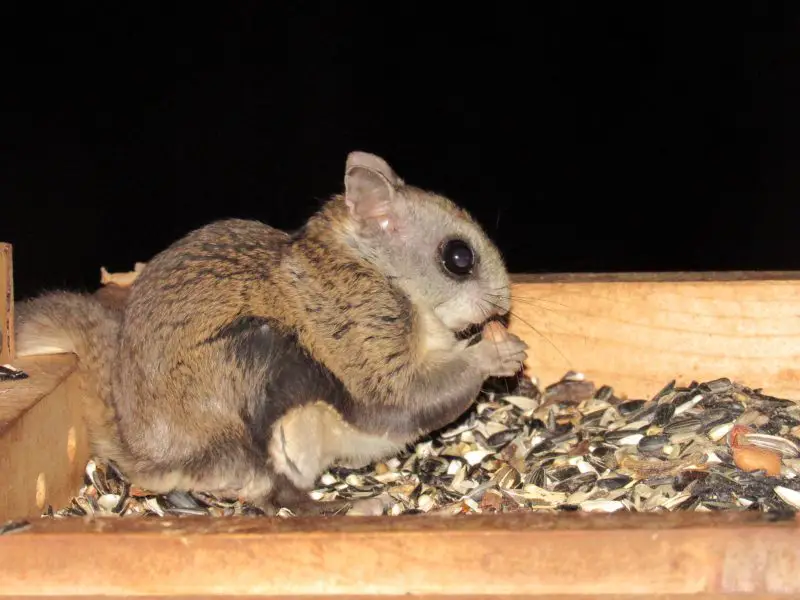
The Humboldt’s Flying Squirrel was only recently recognized as a distinct species, having long been mistaken for the Northern Flying Squirrel. It is slightly smaller, with darker brown fur and a more rounded body. Adults measure about 9 to 11 inches long and weigh around 3 ounces.
This species inhabits dense coniferous forests in northern Idaho, thriving in cool, moist environments. It nests in old tree cavities, mossy stumps, or even birdhouses in remote woodlands. Humboldt’s Flying Squirrels are strictly nocturnal and are most active during warm summer nights.
Their diet includes fungi, truffles, seeds, and berries. Like their northern relatives, they are vital for forest health due to their role in dispersing fungal spores that sustain tree growth. They also cache food in tree hollows to prepare for lean winter months.
Fun fact: When gliding, Humboldt’s Flying Squirrels can appear like floating shadows — their silent, graceful movement through the forest canopy has led to local nicknames like “ghost squirrels.”
Best Time and Places to See Squirrels in Idaho
Idaho offers incredible opportunities to observe squirrels in their natural habitats, from dense mountain forests to open grasslands. The best time to see squirrels is during the early morning and late afternoon, when they are most active for feeding and nesting. Tree squirrels such as the American Red Squirrel and Douglas Squirrel are particularly lively around sunrise, their sharp calls echoing through pine forests. Ground squirrels, on the other hand, are more visible from April to early July, before entering hibernation for the rest of the year.
For the best squirrel-watching experience, head to forested regions of central and northern Idaho, especially near Payette National Forest, Boise National Forest, and Sawtooth National Recreation Area. These regions host a mix of tree and flying squirrels, along with several unique ground squirrel species. In southern Idaho, open areas like Bruneau Dunes State Park and Owyhee County provide great chances to see Piute Ground Squirrels and Southern Idaho Ground Squirrels during spring.
If you’re hoping to spot the elusive Northern or Humboldt’s Flying Squirrel, try quiet, mature conifer forests at night. A red light flashlight can help you glimpse their gliding forms without startling them. Always observe from a distance, as many Idaho squirrel species—especially the Idaho Ground Squirrel—are sensitive or protected due to their limited range.
Pro tip: Bring binoculars and visit areas with mixed forest and meadow edges; squirrels often use these transitional zones to forage, giving you a higher chance of spotting several species in one trip.
FAQs About Squirrels in Idaho
What is the most common squirrel in Idaho?
The most common squirrel species in Idaho is the American Red Squirrel, widely distributed throughout coniferous forests where pine and spruce trees dominate. In urban and suburban regions, especially near Boise and Coeur d’Alene, the Eastern Fox Squirrel is frequently seen. Its adaptability to human-altered environments, including farmlands and city parks, makes it one of the most visible squirrels in the state.
Are there flying squirrels in Idaho?
Yes, Idaho is home to two species of flying squirrels — the Northern Flying Squirrel (Glaucomys sabrinus) and the Humboldt’s Flying Squirrel (Glaucomys oregonensis). Both species are nocturnal and inhabit mature, mixed-conifer forests where tall trees provide ideal gliding routes. Though rarely seen due to their nighttime habits, they play a vital role in spreading fungal spores that sustain healthy forest ecosystems.
When do ground squirrels hibernate in Idaho?
Most ground squirrels in Idaho begin hibernating from late July through early March, depending on altitude and weather conditions. They spend these months underground in elaborate burrows, surviving on fat reserves accumulated during spring and early summer. Only tree squirrels and some chipmunks remain partially active through the winter, occasionally venturing out on warmer days.
Are any Idaho squirrel species endangered or protected?
Yes. The Northern Idaho Ground Squirrel is federally listed as Threatened under the Endangered Species Act due to habitat fragmentation and a very limited range in west-central Idaho. Conservation programs are underway to restore its native meadow habitats and protect it from further decline. Observing or handling this species without a permit is prohibited by law.
Where can I see squirrels in Idaho?
The best places to see squirrels in Idaho include Boise National Forest, Payette National Forest, Sawtooth National Recreation Area, and McCall’s forested regions. For ground squirrels, open grasslands in Owyhee County and Bruneau Dunes State Park offer great opportunities in spring. To glimpse flying squirrels, try nighttime visits to dense pine forests in northern Idaho.
What do squirrels eat in Idaho?
Squirrels in Idaho have diverse diets that include nuts, seeds, pine cones, berries, fungi, and insects. Tree squirrels like the Red and Douglas Squirrel rely heavily on conifer seeds, while ground squirrels eat grasses and wildflower seeds. Flying squirrels prefer fungi and lichens, which help sustain forest health. Their foraging and food-storing behaviors make them key seed dispersers in Idaho’s ecosystems.
Are squirrels active in winter in Idaho?
Tree squirrels remain somewhat active during winter, emerging from their nests on milder days to retrieve food they stored earlier in the year. Ground squirrels and most chipmunks, however, enter a deep hibernation lasting several months. Their activity resumes in early spring when temperatures rise and vegetation becomes available again.
Can I keep a squirrel as a pet in Idaho?
No, it is illegal to keep wild squirrels as pets in Idaho without a licensed wildlife rehabilitation permit. Wild squirrels require specific diets and habitats that cannot be properly replicated in captivity. Keeping them also disrupts local ecosystems and can expose both humans and animals to diseases or parasites.
Do squirrels carry diseases in Idaho?
While most squirrels in Idaho are healthy, they can occasionally carry parasites like fleas or ticks, which may transmit disease. However, such cases are extremely rare. It’s best to enjoy squirrels from a distance, avoid feeding them directly, and keep outdoor areas clean to discourage close contact with wildlife.
What role do squirrels play in Idaho’s ecosystem?
Squirrels are essential for forest regeneration and ecosystem balance. By burying and forgetting nuts and seeds, they help new trees grow naturally. Flying squirrels contribute to forest health by spreading beneficial fungi that aid tree roots in nutrient absorption. In essence, these small mammals are quiet caretakers of Idaho’s wild landscapes.

